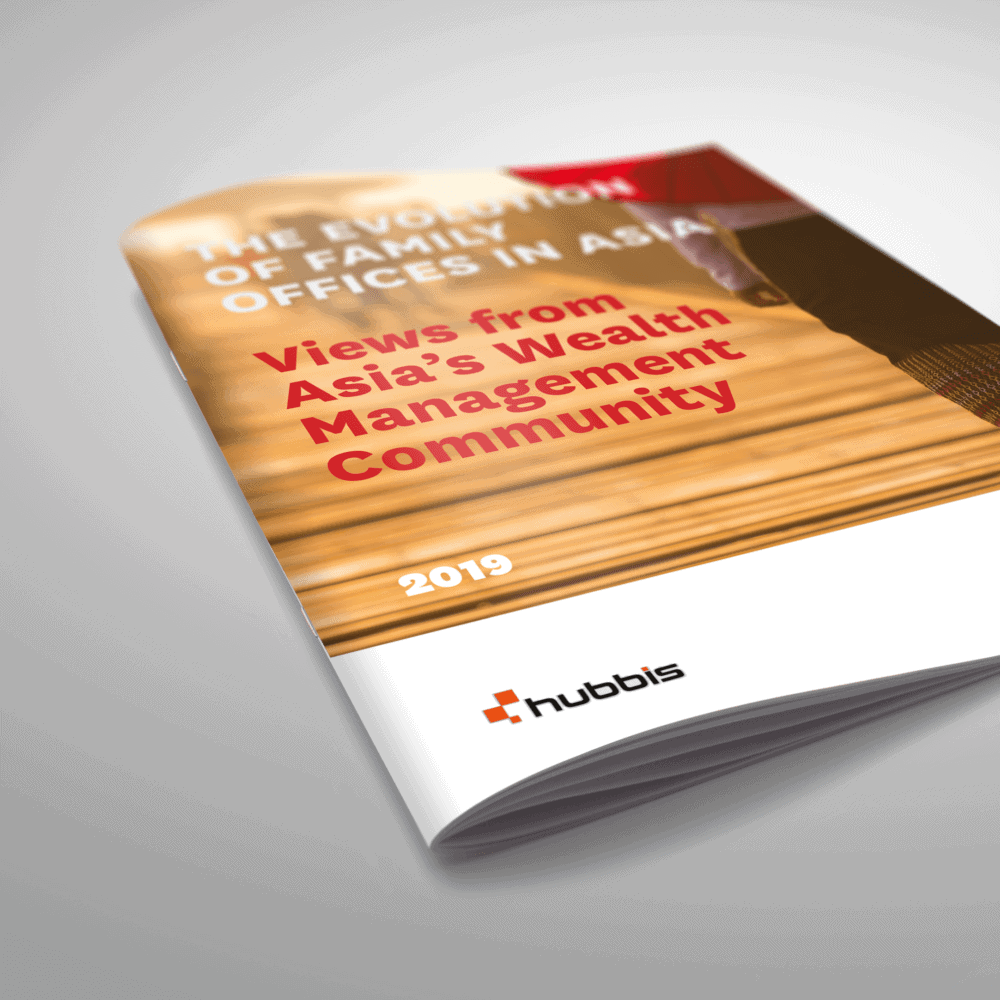Views from Asia’s Wealth Management Community
Both the concept and practice of creating family offices to manage the wealth of ultra-high-net-worth (UHNW) families around the globe are increasing dramatically, and Asia is at the forefront of this rapid growth.
The rising interest and activity in this space are creating great dynamism in this segment of wealth management, causing all sorts of advisors and investment solutions providers to reposition their businesses and range of services to cater to the remarkable rise in the number and the scale of family offices.
Indeed, so significant are the changes taking place in the way in which the world’s super-affluent families approach their wealth management and structuring, and of course the longevity of their family dynasties, that the family office space has moved centre-stage in the global wealth management industry.
There are clearly far-reaching choices to be made by these families, and the greater their wealth, the easier the decision as to the type of family office preferred. For those UHNW families holding at least US$100 million, the directly controlled SFO is often the preferred route, and even more so if their assets go into the hundreds of millions of dollars.
For the smaller UHNW families – perhaps with US$0 million to US$100 million, and sometimes beyond, they are increasingly choosing to allocate their assets to the growing ranks of professional MFO operators.
Whether the SFO or the MFO route is taken, the objectives are similar – namely greater control and professionalisation of family wealth, much-enhanced coordination and communication amongst family members, and the ability to more effectively manage estate transition amongst the generations, and preserve wealth within the family unit, rather than risk what can often be a gradual dispersion, possibly erosion, of that wealth.
Total estimated assets under management of family offices
Single-family offices worldwide, up +38% since 2017
Asia Pacific single-family offices, up +44% since 2017
Billionaires in Asia
According to data released in late July this year by Campden Research in association with UBS in their Global Family Office Report 2019, the total estimated assets under management of family offices stands at US$5.9 trillion globally, while the affluence of the families behind them totals a truly vast US$9.4 trillion.
The research estimated that there are 7,300 single-family offices worldwide, up a remarkable 38% from 2017. While 42% are in North America and 32% are located in Europe, Asia Pacific is catching up fast and now has an estimated 1300, according to Campden, up an impressive 44% since 2017.
The report highlights how this surge came largely after 2000, with Campden noting that 68% of the 360 family offices it surveyed were founded since that date. Campden also highlighted how the SFOs and MFOs involved in their research manage wealth generally in the hundreds of millions of dollars and usually well over US$1 billion for the SFOs, resulting in an average amongst the 360 offices surveyed of around US$916 million each.
Asia Tops the World for Billionaires
Asia is already the world’s top region for billionaires. The 2019 Wealth Report released by London-based real estate agency and consultancy Knight Frank reported that the region’s estimated 787 billionaires were far in excess of the 452 in Europe and 631 in North America. The report predicted that this number would very probably balloon to above 1,000 in the next five years out of a worldwide billionaire population Knight Frank expects to reach 2,696 within that time frame.
Within the region, a large proportion of these billionaires are still in the first generation, meaning that Asia is at the crest of a significant wave of intergenerational wealth transfer, representing trillions of dollars. This will no doubt spur a further rapid increase in demand for SFOs and MFOs.
As the region’s private wealth expands apace, more of the region’s UHNW families are opting for SFOs. And jurisdictions such as Singapore are actively adapting their regulations, as well as tax and other incentives, and certainty, to entice them to set up in their markets.
The clear message that is coming out of our survey and the evidence from the rapid expansion of, and interest in, family offices across the Asia Pacific is that UHNW families are indeed intent on institutionalising and professionalising their wealth, and increasingly so, year by year.
The big trend, therefore, is moving from an all-too-often unstructured approach to the management of family wealth, and often poorly conceived estate planning, towards a far more structured and planned methodology. The formalisation and professionalisation of all aspects of a UHNW family’s wealth is indeed increasingly another luxury that these families want and certainly can afford.
A Family Wealth Revolution
So dramatic is the evolution of interest and activity in this sphere of activity that it might almost be called a revolution, so significant are the changes taking place in the way in which the world’s super-affluent families approach their wealth and the longevity of their family dynasties.

Our research mined down into the wide variety of views that together provide some interesting nuances to the perception of the family office, and the rationale for its rapid expansion across this region.
The family office structure is customised to manage the investments and assets of the family business and to provide holistic advisory services to members of the family with the primary objectives of growing, preserving and transferring the financial, human and social capital of the family.
A family office will tend to not only the financial and administrative sides of a family’s investible wealth but also the key elements that support decision-making and strategy, such as the business, family and asset governance policies and structures, as well as legacy and succession planning and execution.
Moreover, it will often help the extended family handle many other administrative and lifestyle tasks and objectives, including, but not limited to, education, healthcare and well-being, insurance, financial accounting and reporting, as well as potentially a whole variety of ‘concierge’ services, perhaps including travel planning, organising the family fleet of cars and drivers, and so forth.
It can also help with residences and citizenship planning for the family at large and individual members. There is, in fact, a substantial trend towards HNW and UHNW Asian families investing to achieve alternative residence and citizenship around the globe. Indeed, as both Singapore and Hong Kong SAR adjust the regulations and incentives to pull more family offices to their hubs, they are also offering these ultra-affluent families, and the staff required to manage them, much easier access to these types of sought-after residence and citizenship options.

Another core driver of this exciting evolution is the greater weight and intensity of both global and local regulation and the ubiquitous compliance oversight the world’s authorities are conducting. Regional wealth management experts regularly recount how the very affluent families today worry far less about tax mitigation than about assembling the right structures for family asset preservation, and regulatory transparency and achieving whatever legitimate privacy they can in a world of increasing disclosure.
The wealth management industry and its clients are all acutely aware of the increasing focus on, and often investigation of, UHNWIS and families. In a globalised world, multi-jurisdictional regulatory considerations must, therefore, be taken increasingly into account.
Family offices are increasingly seen as ideal vehicles through which to help manage this immense complexity of holding such huge sums, often across multiple jurisdictions, and doing so as privately as possible. UHNW families have therefore been consolidating their worldwide financial affairs and establishing an overall investment strategy that can help to minimise risk and enhance data management, security, privacy, detailed reporting and overall transparency both within the families and externally as required by the authorities.
Download report

Another core trend that the family office is helping facilitate is the shift from publicly marketable capital market assets to private, less liquid, investments. There is indeed a well-documented trend towards investing more in alternatives as well as sustainable and ESG investing, an initiative favoured by the Millennial generation, for example.
The asset types might include direct private equity, co-investing, venture capital, hedge funds, and real assets. This all provides diversification as well as, possibly, enhanced returns, and away from potentially volatile public markets.
In their Global Family Office Report 2019, UBS/Campden Research highlighted how important alternative assets/ investments are today. They reported for example that private equity fared the best of all asset classes, achieving an average return of 16% for direct investing and 11% for funds-based investing. The report showed how real estate achieved a 9.4% return, and the family offices increased their holdings in that asset class to 17% of the average portfolio.
Those figures compared with average returns of 5.4% for the same 12-month period, with developed market equities achieving only 2.1%. Additionally, the report indicated that one-third of family offices are involved in sustainable investing of some form.
The family office is helping family clients to achieve this type of diversity. By pooling all of the family resources through one vehicle, the families will often have access to larger and more complex investments than if family members had each invested alone. For example, access to the cream of the world of private investments often these days means a single investment of US$30 million or sometimes significantly more. And to obtain access to some of the world’s leading commercial real estate projects, again size matters.
Additionally, for many families, especially those where the founder patriarch or matriarch is very old, or indeed where one of them has already passed away, there is a well-documented inclination towards philanthropic and social legacy investing that elevate the family name and heritage well beyond the pursuit of, or preservation of their wealth. Again, the family office can serve as the conduit and enabler for such initiatives.
Important Practical Considerations
Our survey focused on all of these areas, as well as some of the key practical considerations. Structuring and staffing a family office of any guise can sometimes be challenging.
- The family office will need to appoint committees that monitor and advise on certain matters and a Board of Directors that represents the broadest range of constituents of the family.
- The whole area of trusts and trustees is also central to families seeking to preserve and transition wealth, and to keep their affairs as private as possible, as key concerns have grown following the Panama Papers and Paradise Papers debacles of recent years, leading to greater media scrutiny and sometimes public outcry against the ultra-wealthy.
- As part of this initiative, technology adoption is essential, with the next generations of enterprise and family leaders requiring new and additional skill sets, networks, and experience to manage both business and wealth.
- Future clients will thrive in an era in which digital dominates, as there are new ranks of tech-savvy and digitally connected investors and managers. Moreover, with proliferating sources of information at their fingertips, HNW and UHNW families today demand curated product recommendations and targeted valuable insights.
Future Challenges and Developments
The findings of our survey, combined with some private, thought leadership discussions we have held this year, our body of relationships and our perennial work within the Asia Pacific wealth management industry have all co-mingled to help produce this report, which is designed not as a guide to the creation or management of a family office, but to highlight the many exciting challenges and developments taking place in the family office space globally, and more specifically in Asia.
The Evolution of Family Offices in Asia Report
Please log in to view this content OR create an account/create a login
You must login to the Jersey Finance website to access this area. If you do not have a login, please create one.
Help
To create a login, click here
Or please press the back button on your browser to return to the last page to try again or return to the homepage.
To reset your password please click here.

